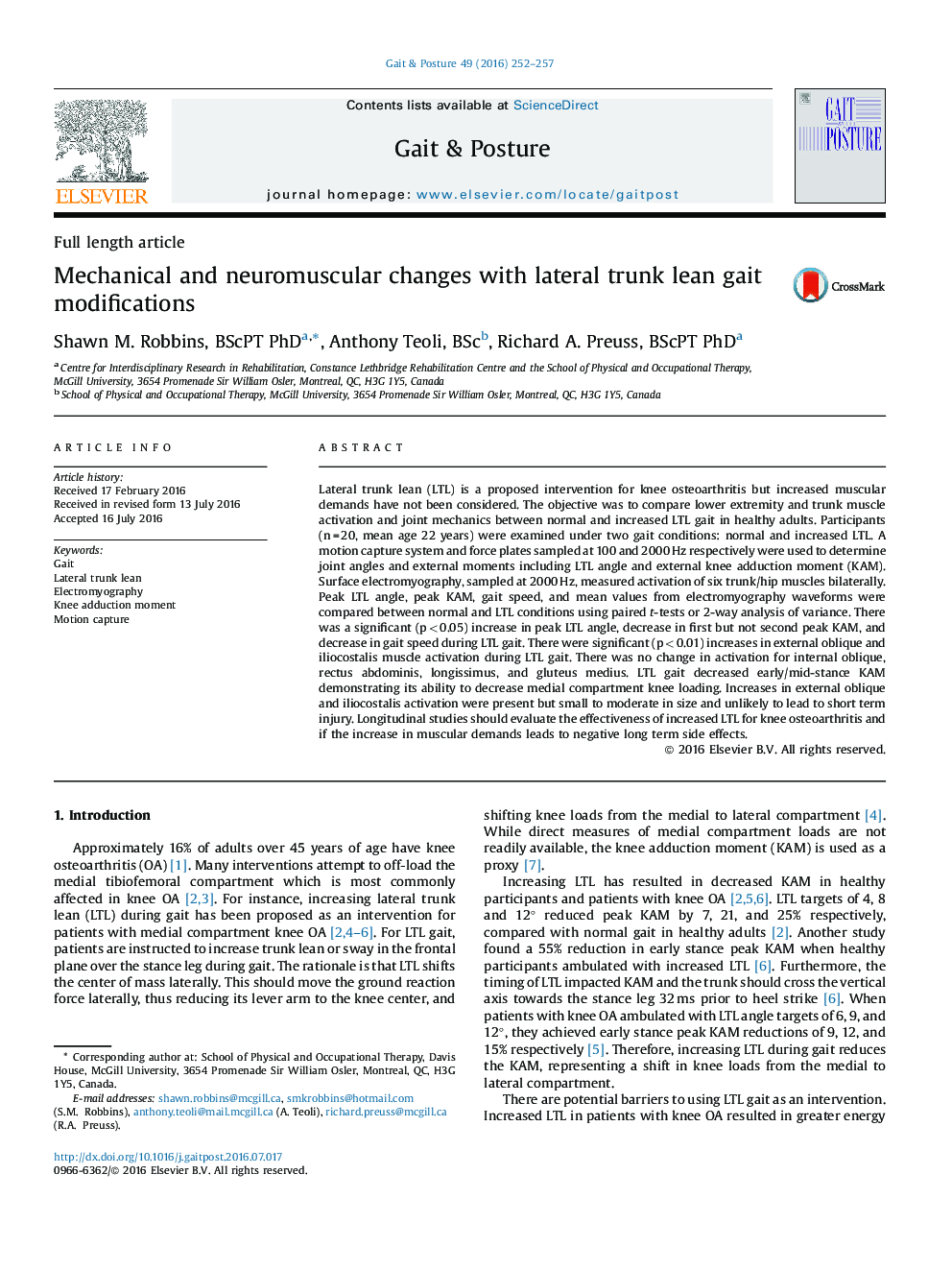| کد مقاله | کد نشریه | سال انتشار | مقاله انگلیسی | نسخه تمام متن |
|---|---|---|---|---|
| 6205465 | 1603846 | 2016 | 6 صفحه PDF | دانلود رایگان |
- Lateral trunk lean gait decreased the external knee adduction moment.
- Lateral trunk lean gait increased external oblique and iliocostalis activation.
- Long term, negative side effects of lateral trunk lean gait should be explored.
Lateral trunk lean (LTL) is a proposed intervention for knee osteoarthritis but increased muscular demands have not been considered. The objective was to compare lower extremity and trunk muscle activation and joint mechanics between normal and increased LTL gait in healthy adults. Participants (n = 20, mean age 22 years) were examined under two gait conditions: normal and increased LTL. A motion capture system and force plates sampled at 100 and 2000 Hz respectively were used to determine joint angles and external moments including LTL angle and external knee adduction moment (KAM). Surface electromyography, sampled at 2000 Hz, measured activation of six trunk/hip muscles bilaterally. Peak LTL angle, peak KAM, gait speed, and mean values from electromyography waveforms were compared between normal and LTL conditions using paired t-tests or 2-way analysis of variance. There was a significant (p < 0.05) increase in peak LTL angle, decrease in first but not second peak KAM, and decrease in gait speed during LTL gait. There were significant (p < 0.01) increases in external oblique and iliocostalis muscle activation during LTL gait. There was no change in activation for internal oblique, rectus abdominis, longissimus, and gluteus medius. LTL gait decreased early/mid-stance KAM demonstrating its ability to decrease medial compartment knee loading. Increases in external oblique and iliocostalis activation were present but small to moderate in size and unlikely to lead to short term injury. Longitudinal studies should evaluate the effectiveness of increased LTL for knee osteoarthritis and if the increase in muscular demands leads to negative long term side effects.
Journal: Gait & Posture - Volume 49, September 2016, Pages 252-257
